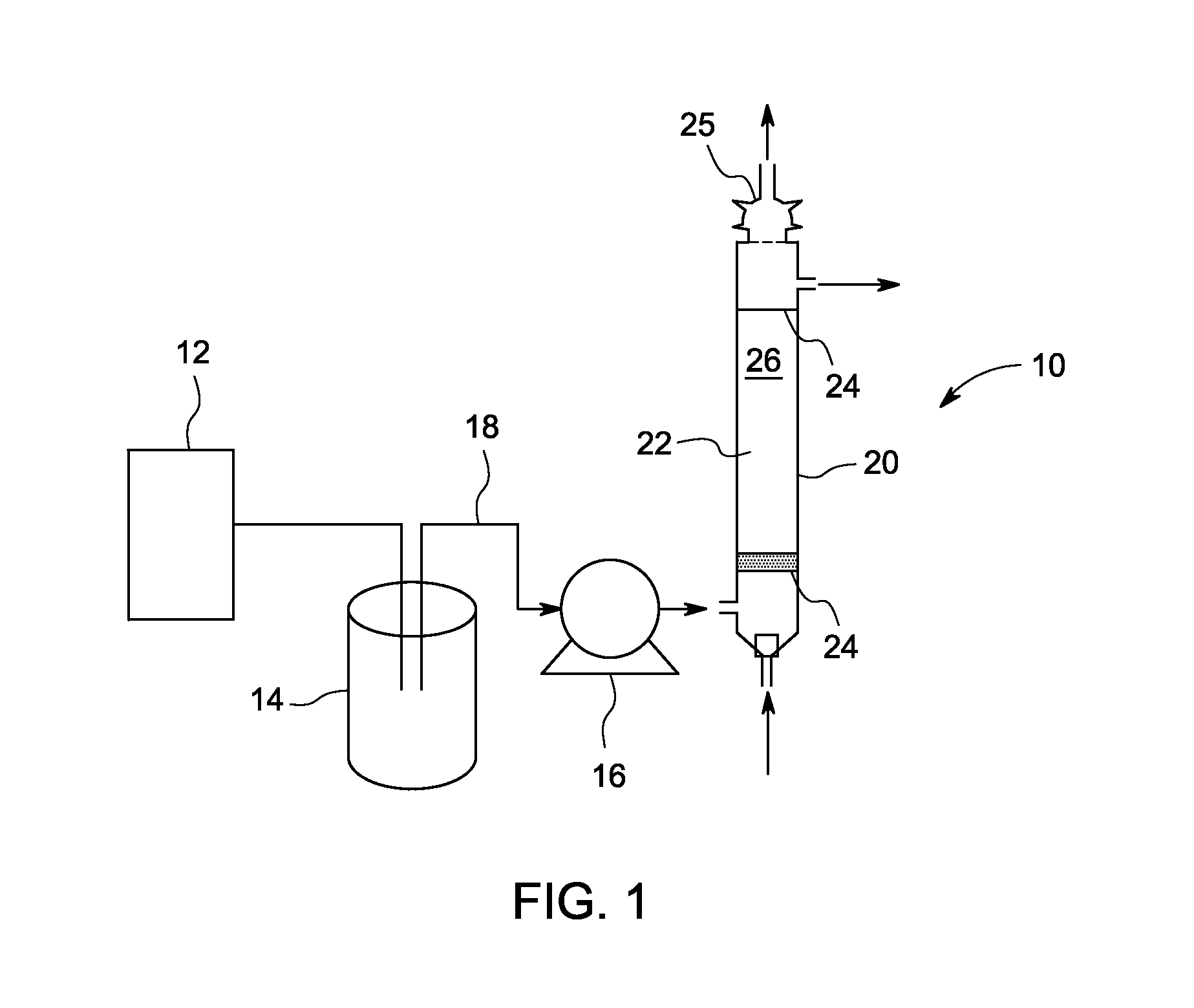Method of removing recalcitrant organic pollutants
a technology of organic pollutants and removal methods, applied in sustainable biological treatment, biological water/sewage treatment, multi-stage water/sewage treatment, etc., can solve the problems of destroying fish and other aquatic life, posing a direct threat to human beings and animals, and stream becoming incapable of exercising self-purification processes, etc., to achieve the effect of reducing the recalcitrant chemical oxygen demand (cod)
- Summary
- Abstract
- Description
- Claims
- Application Information
AI Technical Summary
Benefits of technology
Problems solved by technology
Method used
Image
Examples
example 1
[0027]A pretreatment unit 12 having an MBR system comprising anoxic tank, aerobic tank and membrane tank was used for treatment of refinery wastewater. The feed wastewater was a synthetic refinery wastewater which contained 80 mg / L emulsified oil prepared from a crude oil, 100 mg / L phenol, other types of carbon, nitrogen, phosphate and mineral elements. The total COD, ammonia nitrogen and total nitrogen of the feed wastewater were in the ranges of 1000-2000 mg / L, 20-70 mg / L and 80-130 mg / L, respectively. A ZW500D hollow fiber membrane available from General Electric was used. Stable and efficient treatment was achieved. The MBR effluent COD, ammonia nitrogen and total nitrogen were in the ranges of 30-90 mg / L, 0-2 mg / L and 7-52 mg / L, respectively. Part of the MBR effluent was collected in a storage tank for use as the influent water for the wastewater treatment system 10. The MBR effluent BOD5 was always found to be less than 5 mg / L during the whole testing period.
[0028]A glass colu...
example 2
[0032]The method of this invention was also applied to assess the efficiency of the recalcitrant COD removal for a coke plant wastewater treatment effluent. The coke plant wastewater was treated on-site in a wastewater treatment plant (WWTP) of a steel mill company through conventional activated sludge process (anaerobic-anoxic-aerobic), coagulation and clarification. The water sample taken from this WWTP effluent was further treated by coagulation and clay filtration in our lab to remove suspended solids and indigenous microbes.
[0033]In order to understand the residual organic compound compositions, the water sample was extracted with dichloromethane (DCM) to remove and concentrate organics from the water. This extract was analyzed by GC / MS. A series of linear hydrocarbons ranging from C17 to C25, naphthalene, naphthanol, methyl thiobenzene, phenyl methyl sulfone, dimethyl naphthyridine, p-cyclopentyl phenol, benzopyrrolizidine, trimethyl indole carboxylate, methyl phenyl benzimida...
PUM
| Property | Measurement | Unit |
|---|---|---|
| retention time | aaaaa | aaaaa |
| retention time | aaaaa | aaaaa |
| solubility | aaaaa | aaaaa |
Abstract
Description
Claims
Application Information
 Login to View More
Login to View More - R&D
- Intellectual Property
- Life Sciences
- Materials
- Tech Scout
- Unparalleled Data Quality
- Higher Quality Content
- 60% Fewer Hallucinations
Browse by: Latest US Patents, China's latest patents, Technical Efficacy Thesaurus, Application Domain, Technology Topic, Popular Technical Reports.
© 2025 PatSnap. All rights reserved.Legal|Privacy policy|Modern Slavery Act Transparency Statement|Sitemap|About US| Contact US: help@patsnap.com


